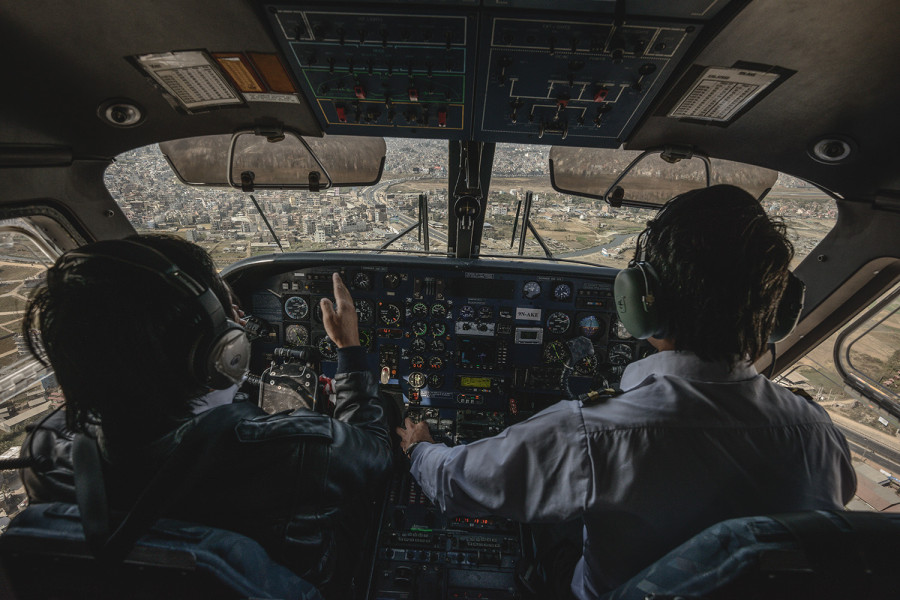Columns
Enriching human touch in aviation
We need to buttress the skills of the workforce to ensure a safe, sustainable, and efficient Nepali sky.
Birendra Kumar Singh
Human error is the most pervasive cause of accidents and incidents in the aviation sector. Almost 65 percent of all jet accidents have been attributed to human error. Flight approach and landing phases account for 4 percent of the total flight exposure time and 49 percent of all accidents.
This calls for the flying crew to be well trained to tackle any problem that may arise either on the sky or on the ground and ensure safe and efficient flights. Of course, this can be achieved only through effective and updated training. But flight safety is not the territory of the crew members on board an aircraft (i.e. pilots, co-pilots, air hostesses or flight engineers) only. It involves flight dispatchers, air traffic controllers, ground staff, security personnel, ticket checkers and everyone who works as a human facilitator responsible for ensuring that passengers reach their destinations safely.
"Human touch" is of vital importance in the aviation sector, and no one can be considered the key and the sole entity. The chain of responsibility starts from the ground and reaches up to the sky. Everyone should be fully aware that they play a pivotal role in ensuring a safe, secured, reliable and successful flight. For that, training plays a vital role.
It is necessary to organise timely training programs to improve the technical and managerial skills of the staff. Efficiency, effectiveness and competence are critical qualities of the staff, which cannot be compromised. Current human resource development theories stress that integrating human factors and resource management principles into an organisation's culture is a wise course of action.
Flight safety is a significant objective of the International Civil Aviation Organization (ICAO). It has long been known that some three out of four accidents result from less than optimum human performance, including that any advance in human resource development through effective training can significantly influence flight safety.
Human factors entail people in working and living environments. They involve the overall performance of human beings within the aviation system. Performance is often integrated within the "human system" framework to enhance safety and security coupled with efficiency and an eco-friendly environment in aviation. It is essential to recognise that the authorities concerned with the operation and administration matters of the aviation system understand that no matter how determined the human staff is to prevent an incident, errors will slip into the working arena.
That is why the aviation sector must be committed to conducting training for ensuring a safe, secure, and efficient air transport. Hence, we need more skilled human resources through intensive training and motivation. At present, there has been a massive wave of retirement from the current workforce. The industry's growth is not in tandem and consistent with the current training, making the present aviation service lose most of its lustre, which has derailed the popularity of civil aviation and has been on the wane.
A safer sky is achieved by investing in the production of highly skilled, efficient, effective, and self-motivated manpower. This, again, is the outcome of high technology and well-equipped training centres that bring together well-trained instructors with years of experience in their respective fields.
Globally speaking, Civil Aviation Policy states that institution and legal reform should be made to have the training and educational activities operated in as much as possible to strengthen and accommodate well-equipped human resources to propel air transportation. Considering this, the Civil Aviation Policy of Nepal states that institutions and legal firms will be made to get the training institute of the Civil Aviation Authority of Nepal (CAAN) affiliated with universities and the Train Air Program of ICAO. This will make the institute capable of carrying out quality control and oversight of training and educational activities operated by the private sector. The native and foreign investors are encouraged to conduct training to fulfil the requirement of human resources in air services.
Glancing back at the report of the ICAO USOAP/2000 of CAAN, we can recall that it mentioned how the low inspector remuneration continues to hamper CAAN's ability to attract, recruit, retain and train appropriately qualified inspectors. CAAN's inspector ratio compared to the number of aircraft is far below the accepted percentage for the inspectors to perform their assigned duties. Also, operation inspectors fly for hire with local airlines, which creates a shortage of inspectors available at CAAN and creates a conflict of interest with the airlines they regulate.
Sadly, in the present context, Nepal does not have the required and sufficient skilled, trained and highly self-motivated civil aviation staff to perform the assigned duties fully. The inability to produce the required workforce has also to do with the lack of budget. Due to a workforce crunch, a few staff members are often burdened with the responsibility of stretching their work hours. This, of course, hampers the quality of work. CAAN and all other institutions tasked with ensuring flight safety should come together to rectify the mistakes being committed at present and work for a safe, sustainable, and efficient Nepali sky.
Singh, a veteran in the civil aviation sector with 30 years of experience, passed away on November 25.




 9.12°C Kathmandu
9.12°C Kathmandu













%20(1).jpg&w=300&height=200)

